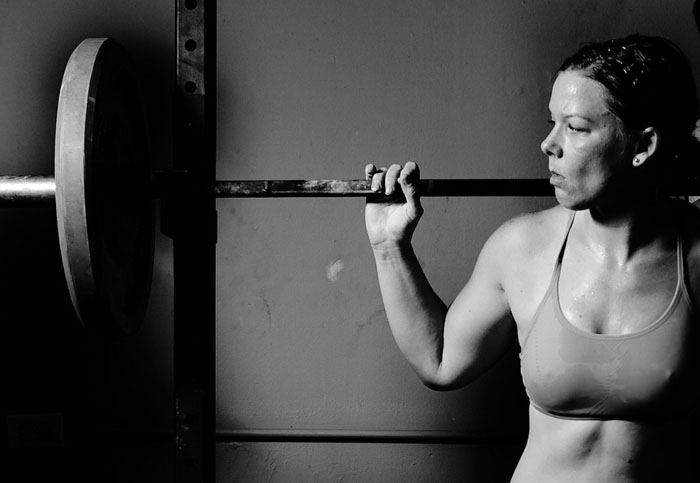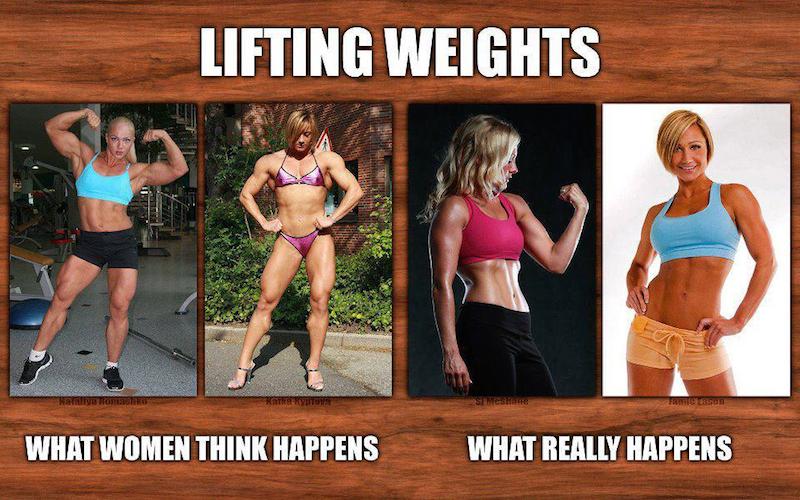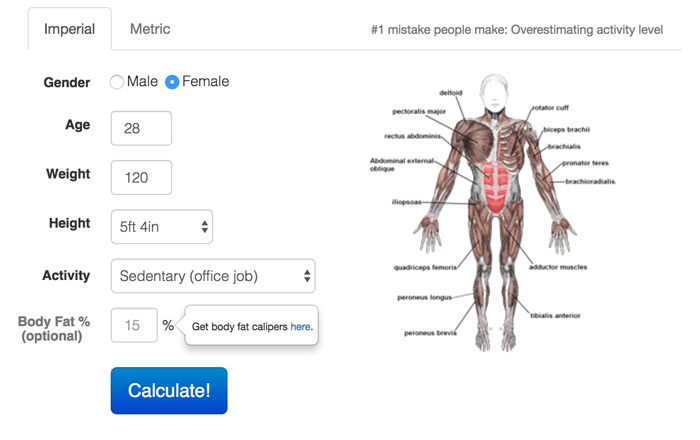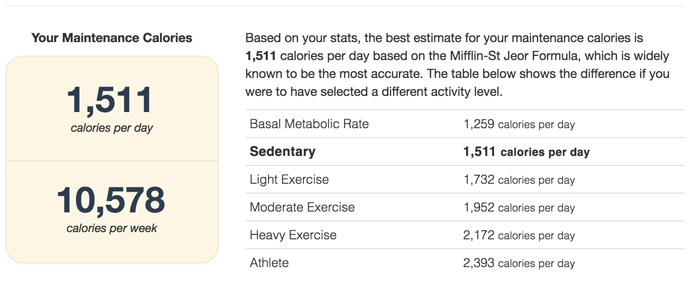
Do you want to build muscle, tone up, and achieve that lean, feminine look? If that’s you, good. By the end of this guide, you’ll know exactly how to go about doing it, and don’t forget to download the free training program to get you started.
There are 3 principles that must be followed in order to get the most out of your muscle building efforts. We’ll cover those in full below, and address some common questions and concerns that come up for many women.
Muscle Building For Women Principal #1: Structured Weight Training And Progressive Overload
Resistance training revolves around a single idea: progression, which is evident by increases in strength over time. The common name for this is strength training, but training for strength explicitly can differ from training for aesthetic improvements or even improvements in endurance.
All forms of resistance training, whether it be barbells, dumbbells, bands, or kettlebells, will result in improved strength over time, but it’s all relative to the specific goal.
If you explicitly want to build muscle, there are two main factors that influence muscle gain: load and volume.
Load refers to how much you’re lifting (how heavy the dumbbell is, or how much weight’s on the bar). Over time, you want to improve the total load. An example is you might start squatting the bar for 3 sets of 5, but your goal over time should be to increase how much you’re lifting by adding weight to the bar. This is also known as progressive overload because you’re progressively adding heavier weights to the bar over time.
So if you’re not adding weight to the bar over a 12 week training period, you’re not practicing progressive overload, which will typically mean you’re not going to make progress with gaining muscle.
Volume refers to the total work being done in terms of repetitions. So when you do 3 sets of 5 on squats, you’re total volume is 15 reps, but with fairly heavy weights. If you did 4 sets of 15, then you’d have 60 total reps with a much lighter load.
The main goal of any training program to increase muscle mass should be to get stronger over time with adequate amounts of volume. An adequate amount of volume tends to be in the range of 30-60 total reps per body part per session. This can be done with as few as 3 sets, or as many as 10 sets. It can be done with only 1 exercise or 3 different exercises.
If you want a structured program, be sure to download my free muscle building program for women down the page.
In general, there are two types of training that most women focus on with muscle building is the main goal. We have pure strength training and bodybuilding training.
All forms of training will inherently improve your strength, but it’s relative to the goal, and this is the most important thing to realize when choosing the best type of program for you.
Bodybuilding training has a large focus on individual body parts and increasing overall volume. It’s not the best for raw strength, but it does wonders for helping you build muscle, and changing your shape. It makes your muscles full and builds curves in all the right places.
Powerlifting training or Olympic Weightlifting are great methods for improving raw strength, and will elicit gains in lean body mass, but might not be the absolute best for maximally increasing muscle mass, especially in the beginner or intermediate who might not be familiar with certain lifting techniques.
This type of training (powerlifting and Olympic Weightlifting) also runs a higher risk of injury due to a demand on precise technique while lifting very heavy weights. There’s a risk/reward tradeoff depending on the approach.
Body weight training will improve your strength, but not to the same levels of training with heavy loads like you would with powerlifting or bodybuilding templates.
But many great bodies have been forged with bodyweight training alone.
The most important aspect is to understand the following:
- Training with resistance (regardless of the method) will improve strength levels.
- Improving strength levels is a good way to force your muscles to grow, and to change your shape (more muscle, more strength, less fat).
- All training methods are valuable, and it’s important to determine what sits well with your temperament, schedule availability, and personal preferences.
For women, I personally prefer a mix of strength trainng and bodybuilding-style training for the best effect.
Some of the above concepts are from my weight training for women article, so check that out to get a deeper understanding of the training.
Where To Start?
The best place to start for most women is to get acquainted with the major compound movements, such as the bench press, squat, deadlift, overhead press, lat pulldown, and bent over row and their variations.
I highly recommend my beginner workout routine, but I’ve also created a training program specifically for women and you can download it below.
Get Results With My FREE 4-Week Training Program For Women
Enter your best email address to get a FREE copy of my Muscle-Building Guide For Women Training Program.

Follow A Structured Program
It’s common for people (all men and women) to hit the gym and train whatever they feel like training that day. I’m sure you’ve been there, as I have in the past. You walk into the gym and wing it without much aim for training specific movements or muscles. You only have the aim of working up a sweat, and feeling a pump.
While this isn’t a bad thing to do every once in awhile, it’s not the best approach if you have specific goals and are going after a certain look.
If you’re not following a plan that focuses on progressive overload and is built around the big movements, you’re not likely to see the progress you want so badly.
Every time you step foot into the gym you should know exactly the following:
- Which movements you’re doing
- How many total sets per exercise
- How many reps per set you’re aiming for
- How long your rest periods are
- How much you lifted the last session in order to make a judgment on how much to lift in your current session
The only way to know this is by following a structured program, and keeping a logbook of each session.
What Does A Structured Program Look Like?
Below is a screenshot of a session from my Muscle-Building Guide For Women Program.

This is the 3rd workout of the week and the emphasis is a focus on quads and hamstrings while training your entire body.
In the movement column, you see the movements listed out in the order you’ll be doing them on this day. In the next column you see “Sets x Reps,” followed by the recommended Intensity, and finally, your total rest periods.
The 1st movement of the day is the Barbell Squat (BB is short for barbell). You’re performing 3 sets of 5 to 8 reps and resting for 2-3 minutes (m = minutes) between sets.
The 2nd movement of the day is a weighted hyperextension, and you’re performing 4 sets of 8 to 10 reps.
Below that you’ll see the 3rd movement and it’s a combination of 2 movements together called a superset. A superset simply means you alternate the 2 movements back to back for the total amount of sets and reps listed until you’re finished. In the rest column, you’ll see the recommendations are a range of 0 to 30 seconds (s = seconds).
In my Muscle Building Guide For Women Program, I cover the program instructions in depth, where you’ll learn all about intensity, how to train properly, and continue making progress.
How A Structured Program Makes You Better
When you’re tracking your training and aiming to make improvements each week, you’re forcing your body to respond in favorable ways. Muscles don’t grow unless they’re constantly stimulated, broken down, and repairing themselves.
If you lift the same weight for an entire year and never make progress, the chances of your body changing much are slim to none. This is how progressive overload works.
Plus, looking back over a year’s worth of records allows you to see your progress, which is very motivating. But it also allows you to see your weak areas, and where you could improve.
Get Results With My FREE 4-Week Training Program For Women
Enter your best email address to get a FREE copy of my Muscle-Building Guide For Women Training Program.
What About Decreased Femininity?
This is a very common question, and I totally understand why. I’ll briefly explain why this shouldn’t worry you, and help put your mind at ease.
For starters, it’s physiologically impossible for most women* to look like men in terms of muscularity. Women, on average, have about 10-15% total amount of testosterone comparatively to men. This makes sense when just looking at men compared to women in body size, strength, facial features, and body hair growth.
This is also why men are able to build much more muscle than women. To further prove my point, many competitive women bodybuilders will take exogenous testosterone (aka steroids) to pack on more muscle to compete on stage.
So if you ever have a fear that lifting weights will turn you into a manly woman, or that your muscles will get big like a man, rest assured there are many women lifting weights every day, training harder than many men, and still sport very feminine physiques.
A quick look at Jen Sinkler’s, or Neghar Fonooni’s Instagram might put you at ease.
On a lighter note, I found this meme below, and it’s fitting in terms of perspective.

If you take a close look, the women on the left fall under the camp of competitive bodybuilders who have spent a lot of time training, eating for mass gain, and may possibly be taking steroids.
And the women on the right are examples of what’s more likely to happen when training consistently and focusing on a diet in line with how lean you wish to be.
I should note that the women on the right are very lean to the point of being near ready for a bikini or figure competition. So keep that in mind when sizing them up.
*JC note: I wrote ‘most women’ because there is a small percentage of genetic outliers who have more testosterone than other women and build muscle faster than normal, but this is rare.
Lastly, I’ve also written on this topic a bit about weight training making one too big, so give these a read if you’re interested:
Weight training in and of itself will not rob you of your femininity. If done right, it can help you build a curvier frame, if that’s what you desire. Just understand that looking like a competitive bodybuilder will take not only many, many years of effort, it might even require some performance enhancing drugs to boot (and we’re not talking about creatine here).
Muscle Building For Women Principal #2: A Caloric Surplus Is A Must
Eating for muscle gain can be tricky for some. I get emails every day along the lines of this:
“I’m having problems losing fat so I can see my muscle.”
Or
“I want to build muscle, but I’m not seeing any progress. Not sure what to change in my diet, but I started having a protein shake after training.”
Or
“I want to improve my muscle size, but don’t want to gain weight.”
The simplest truth of all is this: you must have a caloric surplus (though it doesn’t have to be a big one) to effectively build muscle.
I would argue that your training is more of the determining factor about whether or not you build muscle, but the food surplus and macronutrient composition does play a role.
So let’s go over a few ideas here quickly:
Calorie Surplus
To build muscle, you must eat more than you’re burning. The best thing to do is start off with your maintenance intake. To calculate your maintenance intake, the quickest way is to multiply your body weight by 13-15 depending on how active you are.
If you’re not very active and sitting most of the day at work, then start with 13. If you’re very active during the day, training 4-5 days per week at the gym, then start with 15.
For a woman at 120 pounds and fairly sedentary (sitting at a desk most days), you’d make a calculation like this:
120 (body weight in pounds) x 13 = 1,560 calories.
When I ran this through a TDEE calculator, you get roughly the same figures as you’ll see below.
Here’s the home page where I input the data:

Here’s the next page with the results:

If you’re training hard 3 days per week, you might bump it up to 14 x body weight as a starting point.
One you know your maintenance intake, you know that you’ll need to consume more food to help with muscle growth.
Since women are not prone to building muscle as fast as men, I recommend a smaller calorie surplus than a man might consume.
For training days, I think 200-300 calories over maintenance is a good starting point, and for off days, eating around maintenance is good. I like the extra calories to come strictly from carbohydrates.
Below I’ll show you how to create that surplus.
Macronutrient Split
We have 3 macronutrients that make up the total caloric intake. Those are protein, carbohydrate, and fat.
The ideal protein intake is somewhere between .08 – 1 grams per pound of body weight. For an in-depth explanation, check out my article on how much protein you need.
For fat, I like to take 20-25% of your total maintenance caloric intake and make that your total grams of fat to aim for.
And carbohydrates will typically fill up the rest of your intake. If you’re afraid of carbohydrates, for any reason, check out my article Don’t Fall For The Low-Carb Trap. I’ve also discussed the importance of carbohydrates and their role in thyroid health in my premium women’s program HOTBOD.
Maintenance Math:
We’ll use the 14 x bodyweight example from above.
120 (pounds) X 14 = 1680 calories for maintenance.
Protein Calculation:
120 x 1 = 120 grams of protein
120×4 = 480 calories
Fat Calculation:
.20 x 1620 = 324 (calories from fat).
324/9 = 36 grams of fat
Carbohydrate Calculation:
Take the difference of the calories leftover.
480 (calories from protein) + 324 (calories from fat) = 804 calories.
1680 (maintenance calories) – 804 (fat and protein calories) = 876 (remainder of calories leftover for carbohydrates).
876/4 = 219 grams of carbohydrate.
Maintenance Macro Totals:
Protein: 120 grams
Carbohydrates: 219 grams
Fat: 36 grams
How To Create The Surplus:
I like to create the surplus from carbohydrates. Since a gram of carbohydrate is worth 4 calories, and you are adding 200 calories to your intake on training days, you’d simply add 50 grams of carbohydrate to your maintenance intake.
So your nutrition would look like the following:
Training Days
Protein: 120 grams
Carbohydrates: 269 grams (+50 grams)
Fat: 36 grams
Off Days
Protein: 120 grams
Carbohydrates: 219 grams
Fat: 36 grams
Muscle Building For Women Principal #3: Stress Management And Proper Rest And Recovery
Recovery is the most overlooked piece of the puzzle when it comes to building muscle. Most everyone focuses all their effort on training and diet but forgets to place an equal emphasis on their recovery efforts.
If you’re consistently getting less than 7-8 hours of rest per night, your recovery and repair could be affected negatively. It’s not uncommon for those working long hours to skimp on sleep.
Consistently not getting enough sleep can result in the rise of stress hormones such as cortisol. Not getting enough sleep can also affect hunger levels causing you to eat more, and can even influence whether or not you burn fat, or lose muscle.
For many, sleep hygiene seems to be a foreign concept. Getting enough sleep and to bed on time is not only good for your muscle gain efforts, but for mood, proper recovery, immune system function, and general well-being.
The Circadian Rhythm
Rising and falling with the sun seems to endogenous and totally in line with our biology and evolution. So it makes sense to try to get to bed a few hours after nightfall and to wake with the sun.
Staying up late can be a result of many things such as anxiousness, working late, depression, partying, or late night smartphone scrolling.
One culprit messing with our ability to get to sleep is blue light from our computer screens, televisions, smartphones, and tablets.
At night, our bodies produce a hormone called melatonin, which is very sensitive to the light entering our eyes. This hormone is produced as the sun goes down, and will continue throughout the night as we sleep.
As light hits our eyes in the evening, melatonin production can be switched off, which in turn makes it increasingly difficult to fall asleep.
Any light (sun, lamps, etc) can suppress melatonin production, but our circadian rhythms seem to be mostly affected by the blue light from our computer screens and more modern light bulbs. For more studies, check out this NYT article.
It’s not necessary, nor practical, to rid yourself of artificial lighting after the sun goes down, but you should definitely keep in mind how it’s affecting your sleep, and thusly your muscle gains and overall health.
To cope, I’ve found the following apps to be of tremendous benefit. For my macs, I use a software called f.lux.
If you’re using a Windows machine, it seems f.lux is now available.
The iPhone now has a built-in feature similar to f.lux but I’ve read it doesn’t actually block the blue light that well, so a blue light blocking screen might be a good idea.
If you’re an Android user, there’s an app I just installed on my Nexus called Twilight, and so far I love it. It’s very similar to f.lux. With Twilight, I use a very dim setting so my sleep is not affected at all from reading my Kindle books before passing out.
However, the best option is to avoid computers, phones and tablets a few hours before bedtime, but that’s not always possible, which is another reason to install those free apps above…
Just like nutrition and lifting are very important, sleep is just as crucial to your success.
Make Your Training Fun And Enjoyable
Training for muscle gain and building your body is hard work, but it should also be enjoyable, too. It’s really easy to get caught up in the body comparing mental trap due to Instagram, Facebook, YouTube and all the other social media full of selfies and bikini pics.
And if you’re always comparing yourself to others who are further ahead than you, it’s really hard to have a good time. And if you’re not having a good time, you may not dedicate the time and effort to training that will eventually allow you to reach your goals.
This journey is about the process, and not the outcome. The following is from my article Fitness Goals: Understanding Why We Give Up.
The only thing you have conscious control of is the present. And as the saying goes, your daily actions creates the ripples which form your future.
In short, what you do in this moment is responsible for what you experience in the future (another present moment you will get to experience).
So if you want to feel good in the future, you need to do what will hopefully give you that future experience.
From here on out, I need you to shift your thinking from goal-oriented, to process-oriented.
Goal-oriented is purely focused in the future. Goals are great to have, but if you’re always focusing on the future, you’ll never truly be able to keep your mind in the present, where it needs to be.
By focusing on the present, you’re forced to focus on the process.
And the process is the daily grind of the physique-transformation routine. It’s preparing meals that are in line with your training. It’s training mindfully (my piece about mindfulness on schwarzenegger.com), and focusing on the work you’re putting in.
One of my favorite quotes of all time is from the movie Gladiator.
“What we do in life echoes in eternity.”
So imagine that life equals the present and eternity equals the future, and this quote is a perfect mantra worth keeping in your head at all times.
It’s falling in love with the aspects of the day-to-day, instead of constantly losing yourself daydreaming of how it will feel once you finally reach your goal. Why is this important to know?
Because one day, you’ll eventually wind up where you once dreamed yourself to be, and the only way to make sure you continue progressing is to stay in the present, and fall in love with the process that gives you the results you want and work for.
Original article and pictures take jcdfitness.com site
Комментариев нет:
Отправить комментарий